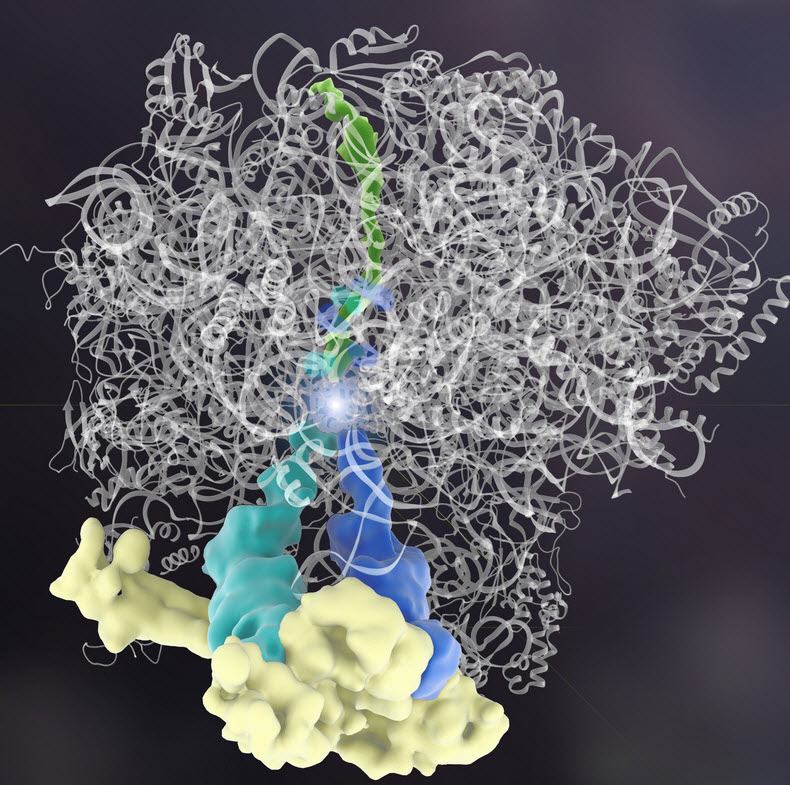Protein partially assembles another protein without genetic instructions
January 2, 2015

Protein adds amino acids to a new protein without genetic instructions. The Rqc2 protein (yellow) binds transfer RNAs (dark blue, teal), which add amino acids (bright spot in middle) to a partially made protein (green). The complex binds the ribosome (white). (Credit: Janet Iwasa, Ph.D., University of Utah)
Defying textbook science, amino acids (the building blocks of a protein) can be assembled by another protein and without genetic instructions, according to a study published today (Jan. 2) in Science.
It happens just before an incomplete protein is recycled due to an assembly failure: a protein called Rqc2 prompts ribosomes (which assemble proteins) to add just two amino acids (of 20 total) — alanine and threonine — over and over, and in any order, playing a role similar to that of messenger RNA.
The apparently random sequence of amino acids probably doesn’t work normally, but may serve specific purposes, the scientists suggest. The code could signal that the partial protein must be destroyed, or it could be part of a test to see whether the ribosome is working properly.
Evidence suggests that either or both of these processes could be faulty in neurodegenerative diseases such as Alzheimer’s, Amyotrophic lateral sclerosis (ALS), or Huntington’s.
The senior authors are Peter Shen, Ph.D., a postdoctoral fellow in biochemistry at the University of Utah; Adam Frost, M.D., Ph.D., assistant professor at University of California, San Francisco; Jonathan Weissman, Ph.D., a Howard Hughes Medical Institute investigator at UCSF; and Onn Brandman, Ph.D., at Stanford University.
The research was supported by grants from the Searle Scholars program, the National Institutes of Health, the Howard Hughes Medical Institute, Stanford University, and the University of Utah.